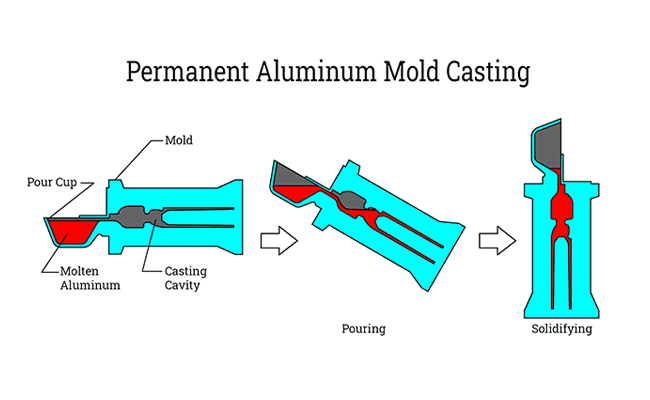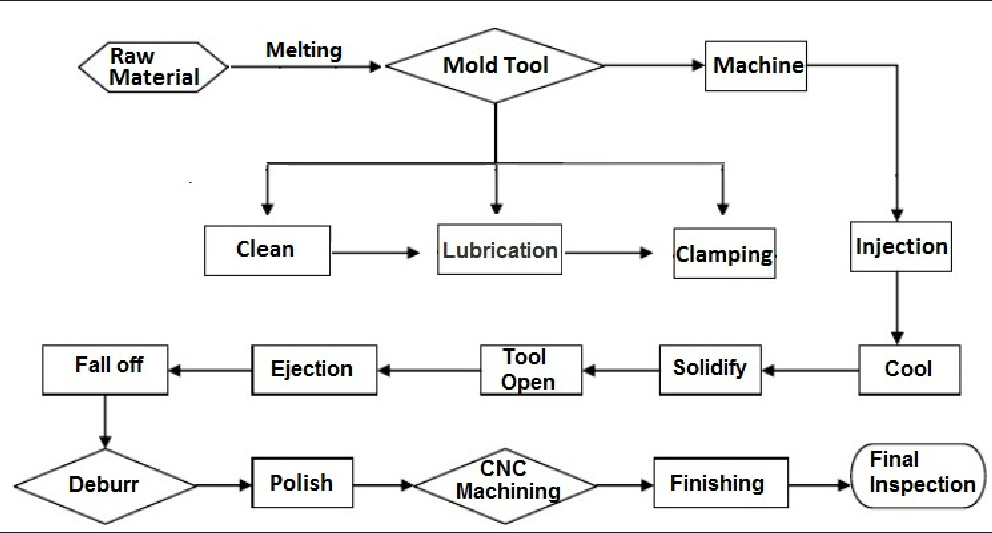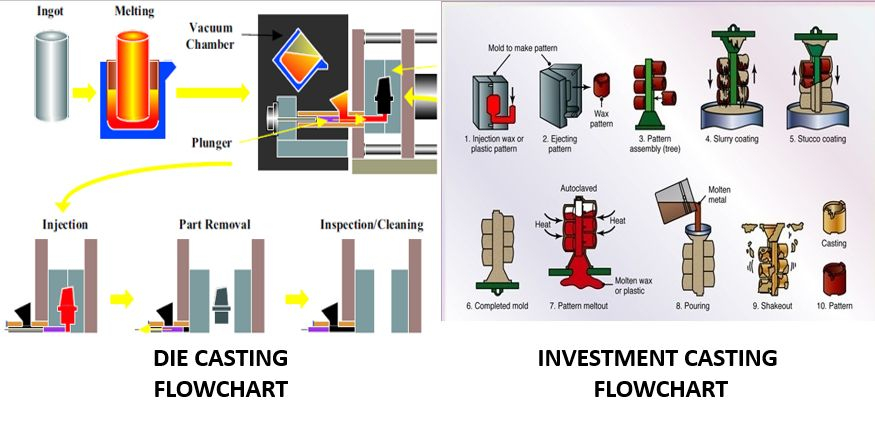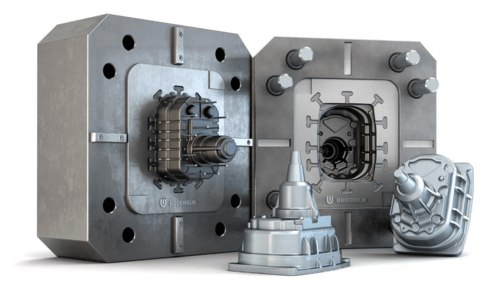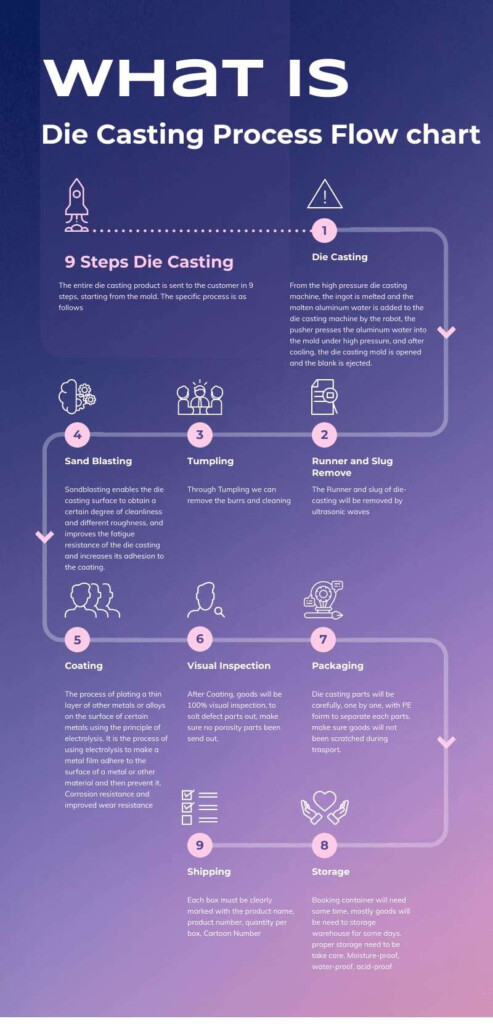Aluminum die casting is a manufacturing process that involves the use of molten aluminum to create complex shapes with high precision. The process begins with the creation of a die, which is a mold made of steel or other durable materials. The die is then injected with molten aluminum under high pressure, allowing the metal to take the shape of the mold. Once the aluminum has solidified, the die is opened, and the finished part is ejected.
Aluminum die casting is widely used in various industries due to its cost-effectiveness, high strength-to-weight ratio, and excellent corrosion resistance. The process is ideal for producing large quantities of parts with consistent quality and dimensional accuracy.
Aluminum Die Casting Process Flow Chart
The Aluminum Die Casting Process Flow Chart
The aluminum die casting process can be broken down into several key steps, each of which is crucial to the overall success of the manufacturing process. The process flow chart helps to visualize these steps and ensures that each stage is completed in the correct sequence. Here is a simplified version of the aluminum die casting process flow chart:
1. Die Preparation
The first step in the aluminum die casting process is the preparation of the die. This involves creating a mold with the desired shape and dimensions using CNC machining or other methods. The die must be carefully designed to allow for the proper flow of molten aluminum and the release of the finished part.
2. Melting and Injection
Once the die is prepared, the next step is to melt the aluminum and inject it into the die under high pressure. The molten aluminum is heated to a specific temperature to ensure proper flow and filling of the mold. The injection process must be carefully controlled to prevent defects such as air pockets or shrinkage.
3. Cooling and Ejection
After the molten aluminum has filled the mold and solidified, the die is cooled, allowing the part to harden. The die is then opened, and the finished part is ejected. Any excess material or flash is trimmed off, and the part is inspected for quality before being sent to further processing or assembly.
By following the aluminum die casting process flow chart, manufacturers can ensure that each step is completed accurately and efficiently, resulting in high-quality parts that meet the desired specifications.
Conclusion
Aluminum die casting is a versatile and cost-effective manufacturing process that offers numerous advantages for producing complex parts with high precision. By understanding the aluminum die casting process flow chart and following each step carefully, manufacturers can achieve consistent results and meet the demands of various industries.
Whether you are looking to produce automotive components, consumer electronics, or other products, aluminum die casting offers a reliable solution for your manufacturing needs.
Download Aluminum Die Casting Process Flow Chart
ALUMINUM DIE CASTALUMINUM DIE CASTING PROCESS Wetron
Investment Casting Process Flow Chart
Aluminum High Pressure Die Casting Process Flow Chart 2023
Die Casting Process Flow Chart YuanZhong
